What is Stop Loss Hunting ?
Introduction
Have you ever taken a trade where your stop-loss got hit but the stock just turned around and went back in your direction?
It can be frustrating, right?
Getting the stop-loss hit is bad enough but getting pushed out of a good trade that eventually would have worked out is like adding insult to injury.
But what if you learn that somebody did that on purpose? Somebody forced you to take that loss and wanted your stop-loss to get hit.
That would be a completely new level of frustration.
No, I am not talking about some crazy conspiracy theory. There are people out there who want your stop-losses to get hit. This is called “stop-loss hunting” and, in this article (and the video above), we will learn everything about it using real-life examples.
So, what is stop-loss hunting?
Stop-loss hunting is a notorious practice of hitting the stop-loss of retail traders. See, whenever there is hunting, there is a hunter and there is a prey.
So, the hunter in these cases are stock operators, big institutions and sometimes even brokers and the ones getting hunted are the retail traders, like you and me.
Now, 3 questions need to be answered in the context of stop-loss hunting– How do these big players hit the stop-losses of retail traders, why do they do it and how can we prevent that from happening?
Let us start with how stop-loss hunting actually happens.
Let’s say a stock is trading at 101. In a situation like this, where do you think is the stop-loss of most of the retail traders who are long on this stock?
Well, it’s not very hard to figure out where most of the retail traders would have placed their stop-loss orders at or somewhere below 100 because it’s psychological support, right? Some have their stop-loss at 100, 99.9, 99.5 and some at 99, but more or less around 100.
Now comes the hunter which could be some big institution or operator.
All this hunter wants is to push the stock price down from 101 to somewhere below 100 so that the majority of these stop-losses get triggered.
However, between him and those stop-losses, there is a wall of buyers who are willing to buy the share at 101, 100.9, 100.8, 100.7.
So, the hunter has to break this barrier, absorb all this demand, to get to the real target and that is the stop-losses of the retail traders.
What he does is place some big sell orders at the market price and a big wave of selling hits the stock. One by one, the barriers begin to break and finally, the price reaches the point where the retail traders were hiding.
Well, no more hiding and now is the time to take a loss for the retail traders.
The stop-losses hit with a big bang. Almost all the stop-loss orders get triggered at the same time and this supply of shares overwhelms the demand. Too many sell orders are placed at the market price that the demand doesn’t stand a chance and it is overpowered.
So obviously the stock prices fall; sometimes 2%, 3% or even higher.
So, this is how stop-loss hunting happens and this is how the poor retail traders who were hoping to make some money have to take losses. This is how they get hunted by the big players.
By the way, the examples I had taken were on the buy side but the same logic is also applicable to the sell-side.
Now, let us answer the second question, which is probably more importantly-WHY?
Why are these institutions or brokers or operators doing this?
See, you need to understand this. It takes money to move a stock and in this example if they are placing big sell orders to bring the stock down from 101 to 99, that requires a lot of money.
So, they are not doing it for fun or to just mess with you and there has to be a good reason why they are doing this.
Well, yes, there are 3 very good reasons why they do it.
Let’s go through them one by one.
First is to generate liquidity
When retail traders place orders, our orders get filled immediately because most of the retail traders place 2 lakh, 3 lakh or max 10 lakh worth of trades and so we never have to worry whether there are enough sellers on the other side.
However, these institutions deal with a much bigger amount. They are placing orders in several crores of rupees and sometimes even Rs.50-60 crores.
If they start buying without enough sellers out there, the sheer size of their demand itself would move the prices higher, i.e. from Rs.101 the stock can go up to Rs.102, Rs.103 and now they have to buy at these higher prices and so, in a way, they are hurting themselves.
By triggering the stop-loss of thousands of traders, they are basically creating ripples in that stock. They are first creating a supply of all these sell orders and they are also inviting new traders as they see some kind of a breakdown in the stock and are willing to initiate fresh short positions.
By bringing this supply in the stock, the institutions make sure that their demand has an adequate supply.
The second is to generate volatility
If you have ever traded in options, you would understand this but, if not, I will try to explain it
Big institutions are usually option sellers and one of the components of option pricing is volatility. If the volatility is high, the option premiums are also higher.
So, these institutions need a higher level of volatility to sell these options to get a better price.
I will take real-life examples (in the video on the top of this page).
So, if we take the earlier example, when the stock is trading at Rs.101, the put option of this stock would be at Rs.200 rupees. It is not a great entry point for them.
But by triggering the stop-losses of retail traders, they do get that spike in volatility which causes the option prices to go up. An option of 200 rupees before would now probably go up to Rs.300, 400 or even 500 and this kind of spike gives them the perfect opportunity to sell options at a higher price.
The third reason they do stop-loss hunting is to get better prices
It’s kind of an obvious point. If you have to enter into the stock, wouldn’t it be better to buy it at 97 or 98 rather than buying at 101?
Frequently asked questions
How do these institutions know where the stop-losses are?
It’s not very hard because we, retail traders, are very predictable. Where do we place our stop-losses? Near day’s high, day’s low, previous day’s high, previous day’s low, or below some round number like 100.
It’s not very hard to figure out where we are hiding. These big guys sometimes also have insider information from brokers who have access to data. Most of the big brokers do not indulge in such practices though but the small ones might.
Is this legal or unethical?
Unless there is a direct link that can be found between your broker and stop-loss hunting, it’s almost impossible to find proof of that. Which retail trader has the capital to go to court and fight their broker?
Stop-loss hunting is done more often out of necessity than any pleasure.
How can we protect ourselves from getting hunted?
That, I think, is the most important question and it goes to the broader philosophy about stop-losses. I don’t think a short video like this would justify such a complicated point.I would love to dedicate a video on that so that it can be understood, not just from a technical standpoint but also from a philosophy standpoint.
Because all said and done, what is in our circle of control?
Can we control someone from placing a huge order? No, but what we can do is to not be part of SL orders at obvious points that we become an easy target to hunt.
Remember. Staying in groups helped us survive when we were nomads but the herd mentality would get you killed in the stock market.
Howdy!
If you’re here for the first time, let’s get introduced.
VRD Nation is India’s premier stock market training institute and we (Team VRD Nation) are passionate about teaching each and every aspect of investing and trading.
If you’re here for the first time, don’t forget to check out “Free Training” section where we have tons of free videos and articles to kick start your stock market journey.
Also, we got two awesome YouTube channels where you can continue the learning process.
Must-Read Articles
What is Stop Loss Hunting?
Introduction
Have you ever taken a trade where your stop-loss got hit but the stock just turned around and went back in your direction?
It can be frustrating, right?
Getting the stop-loss hit is bad enough but getting pushed out of a good trade that eventually would have worked out is like adding insult to injury.
But what if you learn that somebody did that on purpose? Somebody forced you to take that loss and wanted your stop-loss to get hit.
That would be a completely new level of frustration.
No, I am not talking about some crazy conspiracy theory. There are people out there who want your stop-losses to get hit. This is called “stop-loss hunting” and, in this article (and the video above), we will learn everything about it using real-life examples.
So, what is stop-loss hunting?
Stop-loss hunting is a notorious practice of hitting the stop-loss of retail traders. See, whenever there is hunting, there is a hunter and there is a prey.
So, the hunter in these cases are stock operators, big institutions and sometimes even brokers and the ones getting hunted are the retail traders, like you and me.
Now, 3 questions need to be answered in the context of stop-loss hunting– How do these big players hit the stop-losses of retail traders, why do they do it and how can we prevent that from happening?
Let us start with how stop-loss hunting actually happens.
Let’s say a stock is trading at 101. In a situation like this, where do you think is the stop-loss of most of the retail traders who are long on this stock?
Well, it’s not very hard to figure out where most of the retail traders would have placed their stop-loss orders at or somewhere below 100 because it’s psychological support, right? Some have their stop-loss at 100, 99.9, 99.5 and some at 99, but more or less around 100.
Now comes the hunter which could be some big institution or operator.
All this hunter wants is to push the stock price down from 101 to somewhere below 100 so that the majority of these stop-losses get triggered.
However, between him and those stop-losses, there is a wall of buyers who are willing to buy the share at 101, 100.9, 100.8, 100.7.
So, the hunter has to break this barrier, absorb all this demand, to get to the real target and that is the stop-losses of the retail traders.
What he does is place some big sell orders at the market price and a big wave of selling hits the stock. One by one, the barriers begin to break and finally, the price reaches the point where the retail traders were hiding.
Well, no more hiding and now is the time to take a loss for the retail traders.
The stop-losses hit with a big bang. Almost all the stop-loss orders get triggered at the same time and this supply of shares overwhelms the demand. Too many sell orders are placed at the market price that the demand doesn’t stand a chance and it is overpowered.
So obviously the stock prices fall; sometimes 2%, 3% or even higher.
So, this is how stop-loss hunting happens and this is how the poor retail traders who were hoping to make some money have to take losses. This is how they get hunted by the big players.
By the way, the examples I had taken were on the buy side but the same logic is also applicable to the sell-side.
Now, let us answer the second question, which is probably more importantly-WHY?
Why are these institutions or brokers or operators doing this?
See, you need to understand this. It takes money to move a stock and in this example if they are placing big sell orders to bring the stock down from 101 to 99, that requires a lot of money.
So, they are not doing it for fun or to just mess with you and there has to be a good reason why they are doing this.
Well, yes, there are 3 very good reasons why they do it.
Let’s go through them one by one.
First is to generate liquidity
When retail traders place orders, our orders get filled immediately because most of the retail traders place 2 lakh, 3 lakh or max 10 lakh worth of trades and so we never have to worry whether there are enough sellers on the other side.
However, these institutions deal with a much bigger amount. They are placing orders in several crores of rupees and sometimes even Rs.50-60 crores.
If they start buying without enough sellers out there, the sheer size of their demand itself would move the prices higher, i.e. from Rs.101 the stock can go up to Rs.102, Rs.103 and now they have to buy at these higher prices and so, in a way, they are hurting themselves.
By triggering the stop-loss of thousands of traders, they are basically creating ripples in that stock. They are first creating a supply of all these sell orders and they are also inviting new traders as they see some kind of a breakdown in the stock and are willing to initiate fresh short positions.
By bringing this supply in the stock, the institutions make sure that their demand has an adequate supply.
The second is to generate volatility
If you have ever traded in options, you would understand this but, if not, I will try to explain it
Big institutions are usually option sellers and one of the components of option pricing is volatility. If the volatility is high, the option premiums are also higher.
So, these institutions need a higher level of volatility to sell these options to get a better price.
I will take real-life examples (in the video on the top of this page).
So, if we take the earlier example, when the stock is trading at Rs.101, the put option of this stock would be at Rs.200 rupees. It is not a great entry point for them.
But by triggering the stop-losses of retail traders, they do get that spike in volatility which causes the option prices to go up. An option of 200 rupees before would now probably go up to Rs.300, 400 or even 500 and this kind of spike gives them the perfect opportunity to sell options at a higher price.
The third reason they do stop-loss hunting is to get better prices
It’s kind of an obvious point. If you have to enter into the stock, wouldn’t it be better to buy it at 97 or 98 rather than buying at 101?
Frequently asked questions
How do these institutions know where the stop-losses are?
It’s not very hard because we, retail traders, are very predictable. Where do we place our stop-losses? Near day’s high, day’s low, previous day’s high, previous day’s low, or below some round number like 100.
It’s not very hard to figure out where we are hiding. These big guys sometimes also have insider information from brokers who have access to data. Most of the big brokers do not indulge in such practices though but the small ones might.
Is this legal or unethical?
Unless there is a direct link that can be found between your broker and stop-loss hunting, it’s almost impossible to find proof of that. Which retail trader has the capital to go to court and fight their broker?
Stop-loss hunting is done more often out of necessity than any pleasure.
How can we protect ourselves from getting hunted?
That, I think, is the most important question and it goes to the broader philosophy about stop-losses. I don’t think a short video like this would justify such a complicated point. I would love to dedicate a video on that so that it can be understood, not just from a technical standpoint but also from a philosophy standpoint.
Because all said and done, what is in our circle of control?
Can we control someone from placing a huge order? No, but what we can do is to not be part of SL orders at obvious points that we become an easy target to hunt.
Remember. Staying in groups helped us survive when we were nomads but the herd mentality would get you killed in the stock market.

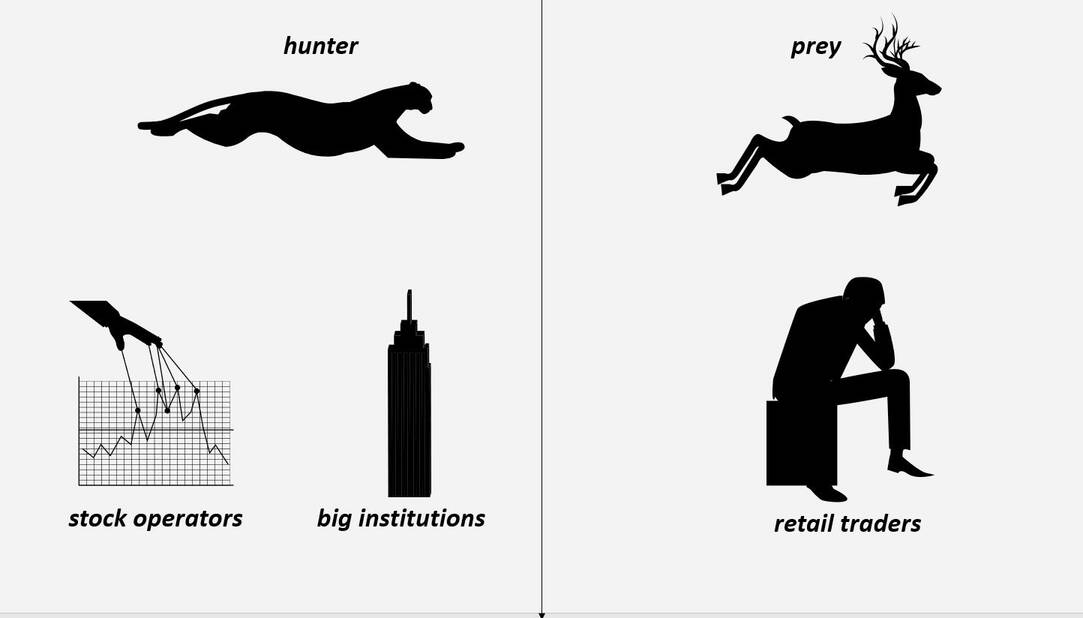
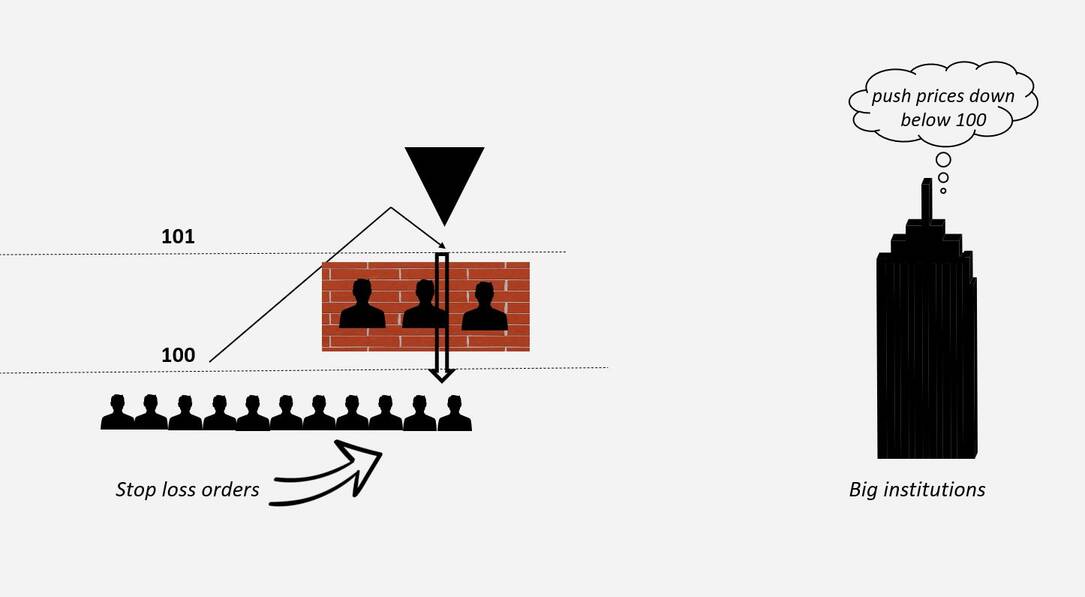



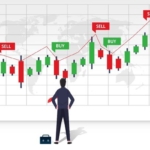


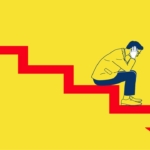


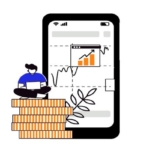


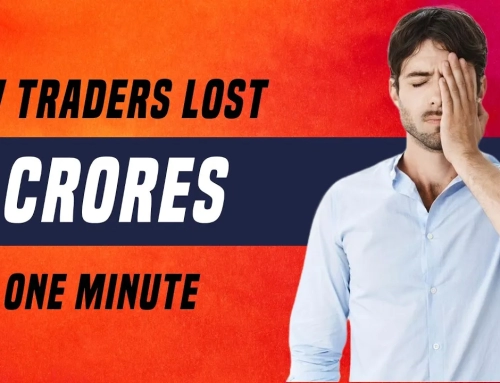

![What is Virtual Contract Note [Zerodha]](https://www.vrdnation.com/wp-content/uploads/2023/10/maxresdefault-virtual-note-500x383.jpg)
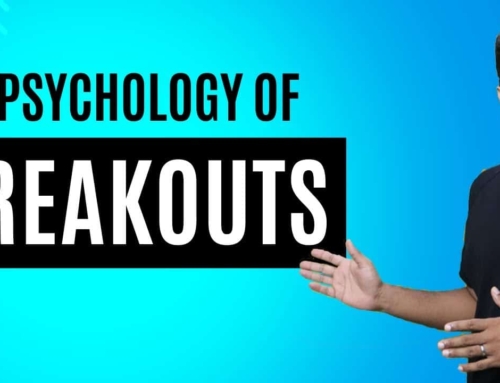


Nice video sir, is there new video to prevent getting hunted?